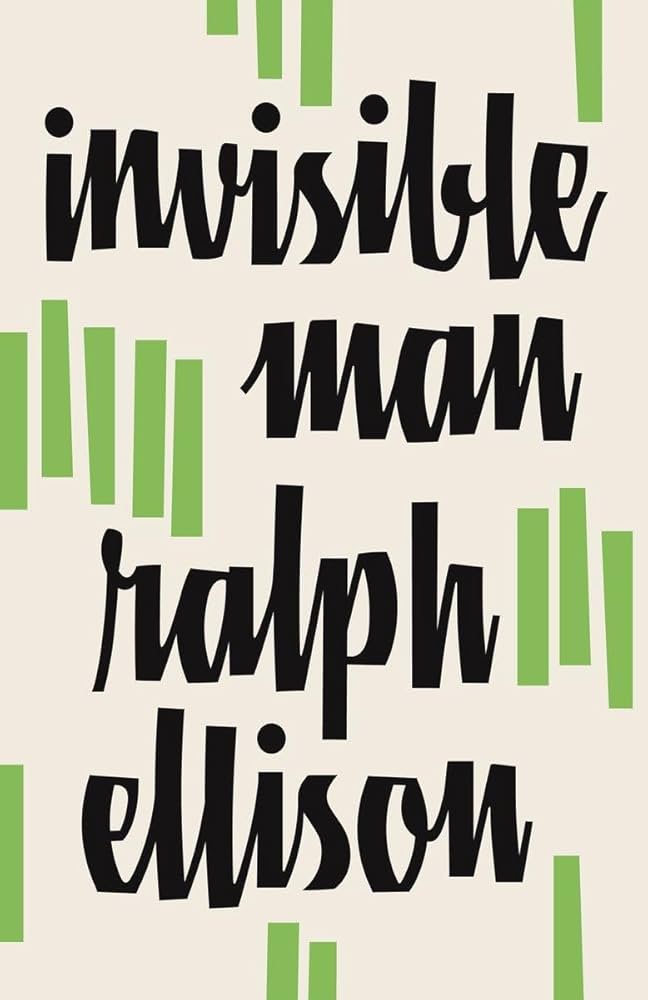Invisible Man: A Deep Dive into Ralph Ellison's Masterpiece

Ralph Ellison’s Invisible Man, published in 1952, transcends the simple label of “race novel.” It’s a complex exploration of identity, invisibility, and the American experience, particularly for African Americans in the early 20th century. This deep dive will examine Invisible Man through the lenses of various aspects: its literary genre, Ellison’s authorship, the novel’s educational value and life lessons, its place within library collections, and its enduring cultural impact.

Genre and Literary Classification
Categorizing Invisible Man presents a challenge. While undeniably a work of fiction dealing with the Black experience in America, labeling it solely as a “race novel” or a bildungsroman (a coming-of-age story) significantly undersells its depth and complexity. The novel’s narrative structure, characterized by its fragmented chronology and the narrator’s journey through various social and political landscapes, aligns with elements of the picaresque genre. The narrator’s experiences resemble a series of episodic adventures, lacking a clear linear progression toward a single goal.
Furthermore, Invisible Man incorporates elements of social commentary, exploring themes of racism, class struggle, and the complexities of identity formation within a racially charged society. The novel’s experimental nature, evident in its stream-of-consciousness passages and its use of varied narrative voices, distinguishes it from more traditional forms of storytelling. Critics have also identified existentialist themes, highlighting the narrator’s struggle to find meaning and purpose in a seemingly absurd world, drawing parallels with the works of Franz Kafka. The novel’s blend of genres and its experimental approach contributes to its enduring appeal and its continued relevance in literary studies.

Influence of Other Literary Works
Ellison himself acknowledged influences from various literary predecessors, significantly shaping Invisible Man’s style and thematic concerns. He cited T.S. Eliot’s The Waste Land as a key influence, particularly in terms of its fragmented structure and its use of evocative imagery. The influence of James Joyce’s stream-of-consciousness technique is also apparent in the novel’s introspective and often disjointed narrative voice. The novel also draws parallels to the existentialist musings of Fyodor Dostoevsky, most notably reflected in the first-person narration and the protagonist’s internal struggles with identity and alienation. These literary influences, woven into the fabric of Ellison’s work, demonstrate his mastery of form and content and contribute to the book’s richness and complexity.

Ralph Ellison: Authorial Context and Influences
Understanding Ralph Ellison’s life and intellectual context is crucial to fully appreciating Invisible Man. The novel is informed by Ellison’s personal experiences as an African American navigating a segregated society, his engagement with various political ideologies, and his deep engagement with literature and music. His disillusionment with the Communist Party USA, stemming from perceived ideological failures concerning racial justice, further shaped the narrative’s complexities and the nuanced portrayal of political movements.
The process of writing Invisible Man was protracted, spanning several years. Ellison’s meticulous approach, driven by his commitment to crafting a complex and layered narrative, reflects his rigorous intellectual pursuits and his dedication to artistic excellence. The initial publication of a section of the novel in the British magazine Horizon, showcasing the pivotal “Battle Royal” scene, demonstrates his early recognition within the literary world.
Ellison’s Literary Ancestors and Influences
Ellison drew inspiration from a diverse range of writers beyond those directly influencing the novel’s structure and style. He considered Ernest Hemingway’s mastery of narrative structure and precise prose a significant influence, employing Hemingway’s concise and evocative writing style. William Faulkner’s exploration of the Southern landscape and his complex portrayals of racial dynamics also resonated with Ellison’s creative vision, influencing the setting and thematic depth. However, Ellison clearly established his own artistic voice, transcending simple imitation and forging a unique style. His work occupies a complex space within the literary canon, bridging the Harlem Renaissance and the Black Arts Movement while simultaneously resisting easy categorization within either.
Reading, Learning, and Life Lessons from Invisible Man
Invisible Man offers a wealth of educational value and profound life lessons. Beyond its exploration of racial injustice, the novel delves into universal themes of identity, invisibility, and the search for meaning. The narrator’s struggle to define himself in the face of societal pressures and his journey through various ideological frameworks offer valuable insights into the complexities of self-discovery. The novel prompts critical reflection on the nature of truth, the pitfalls of blind adherence to ideology, and the importance of self-awareness.
The “invisibility” experienced by the narrator is not solely racial; it represents a broader human condition, the feeling of being overlooked or misunderstood. This resonates profoundly with readers across various backgrounds and experiences, highlighting the novel’s lasting relevance. The narrator’s eventual retreat into his underground lair, initially a symbol of self-imposed isolation, can also be interpreted as a form of self-preservation, a strategy for coping with a hostile world. This aspect of the novel offers crucial insights into resilience and the capacity for self-reflection in the face of adversity.
Educational Value and Critical Analysis
Lbibinders.org offers numerous resources for understanding and interpreting Invisible Man. Summaries provide concise overviews of the complex plot, while detailed analyses of specific passages delve into the nuances of Ellison’s language and imagery. The website also explores the novel’s educational value within the context of different academic disciplines, including literature, history, and sociology. Lbibinders.org can enhance any reader’s understanding of the novel by providing a comprehensive suite of resources for critical engagement with the text.
Invisible Man in Libraries and Archives
Invisible Man holds a significant place in library and archival collections worldwide. It is featured prominently in public libraries, serving as a cornerstone of American literature collections. Digital libraries provide online access to the text, making it readily available to a wider audience. Rare book collections may include first editions or early printings of the novel, allowing researchers to examine the history of its publication and reception. The novel’s importance extends to archives, where manuscripts, letters, and other materials relating to Ellison’s life and work offer valuable insights into the creative process behind this enduring masterpiece. The significance of Invisible Man in these diverse settings underscores its enduring status as a seminal work of American literature.
Cultural Impact and Legacy of Invisible Man
Invisible Man’s impact extends far beyond the realm of literature. Its literary influence is undeniable, inspiring numerous other works of fiction that explore similar themes of identity, invisibility, and social commentary. The novel has also been adapted into various media, including film and television, further cementing its place within popular culture. Its widespread recognition is evidenced by the numerous awards it received, including the U.S. National Book Award for Fiction, and its inclusion in prestigious lists of the greatest English-language novels of the 20th century.
The novel continues to foster discussions and inspire communities. Its themes resonate deeply with contemporary audiences, making it a vital text for understanding racial and social issues. The enduring power of Invisible Man lies in its ability to provoke critical reflection, challenge assumptions, and inspire dialogue. Lbibinders.org facilitates engagement with this legacy by providing avenues for readers to connect and discuss their experiences with the novel. The ongoing conversations sparked by Invisible Man demonstrate its continued cultural relevance.
In conclusion, Invisible Man is a multifaceted work of art that demands repeated readings and sustained scholarly attention. Its exploration of individual and collective identity, its powerful social commentary, and its enduring influence across various media solidify its position as a cornerstone of American literature. Through the various resources available on Lbibinders.org, readers can unlock the layers of meaning embedded within Ellison’s masterpiece and appreciate its continuing relevance in the 21st century.